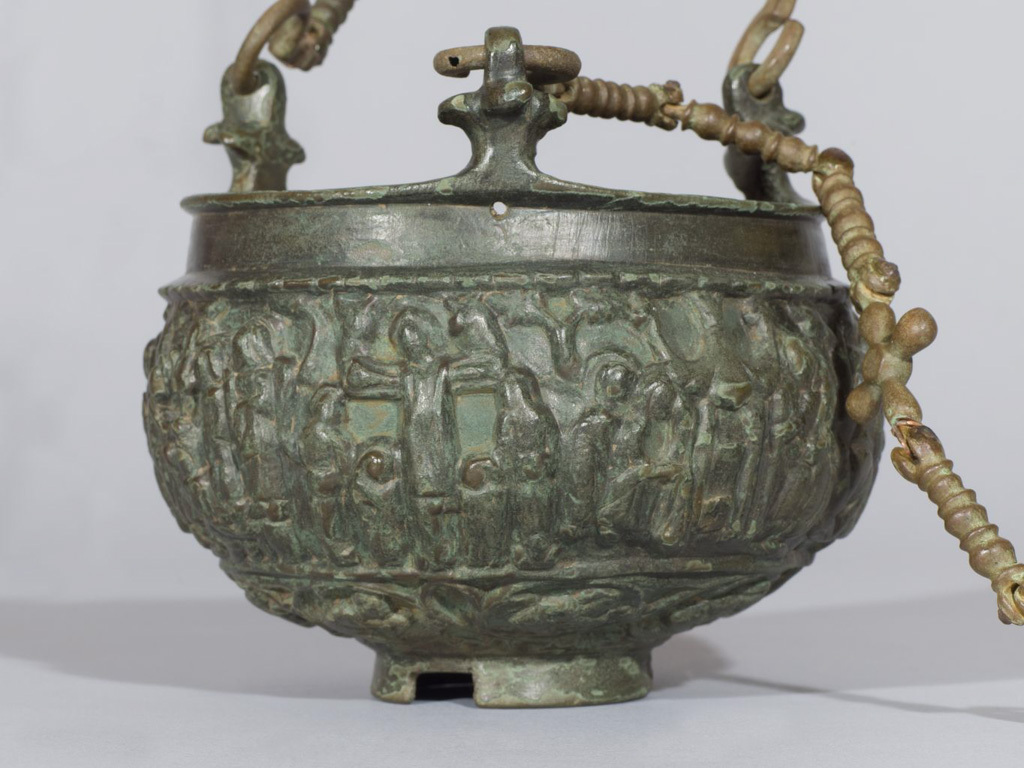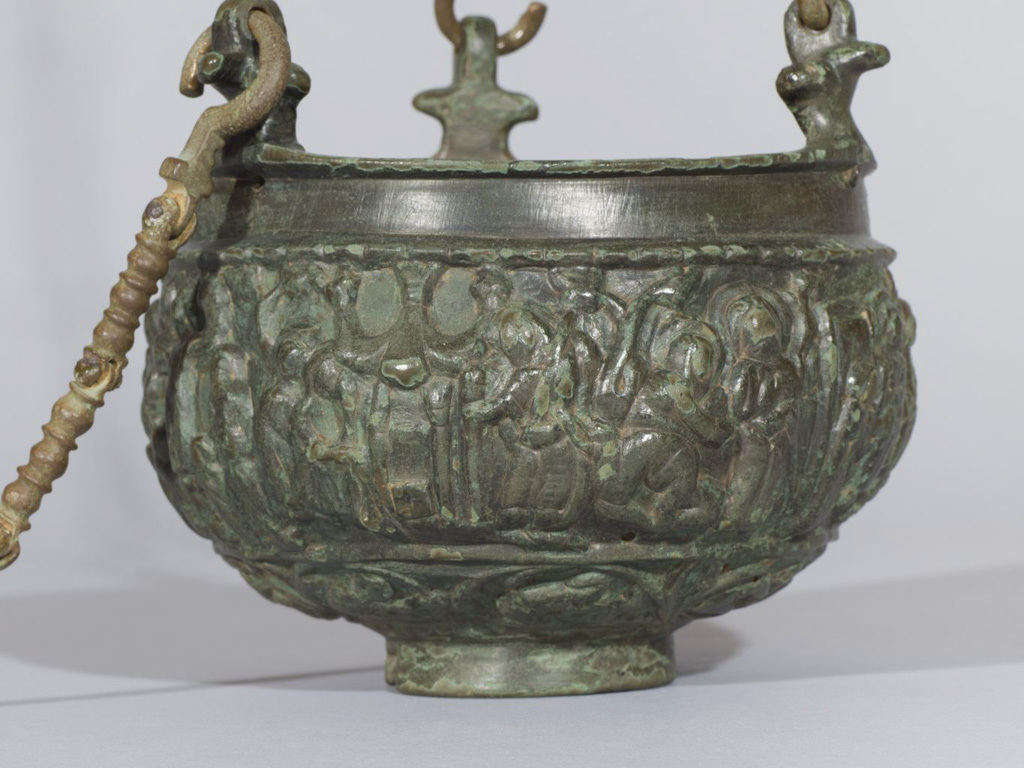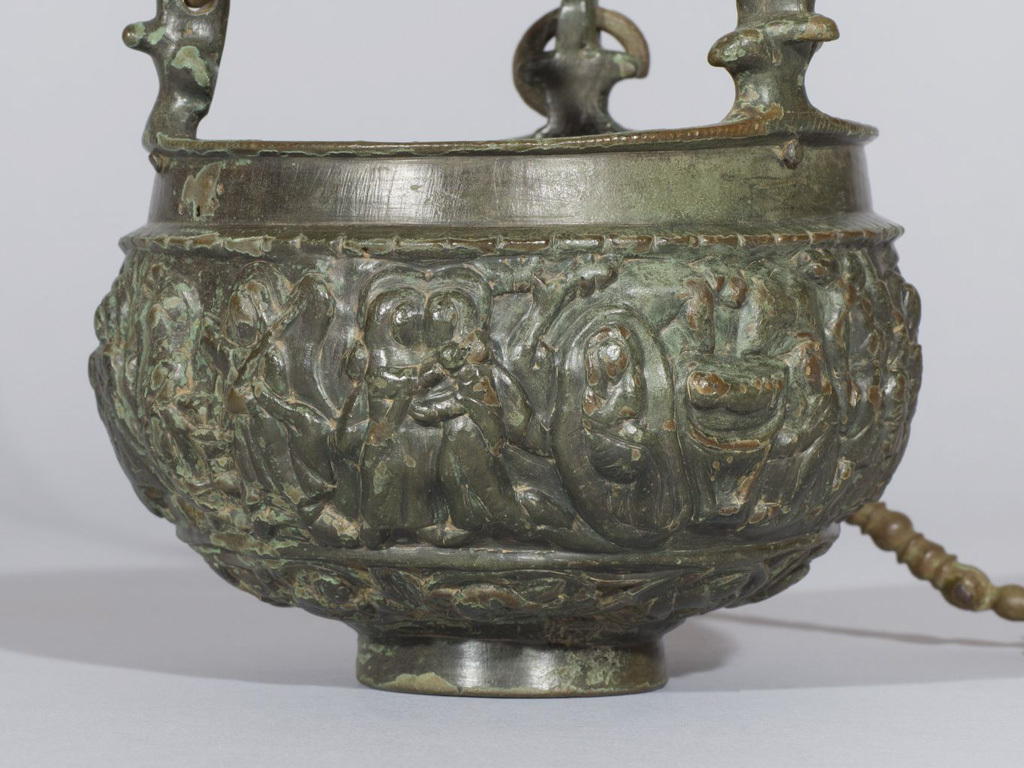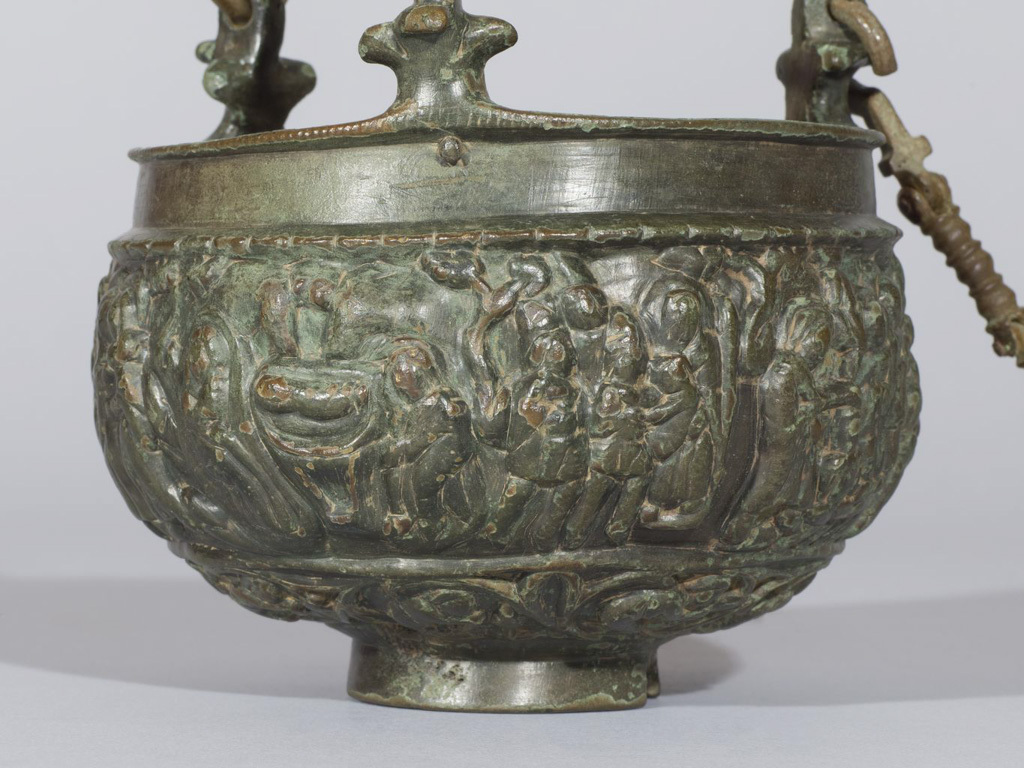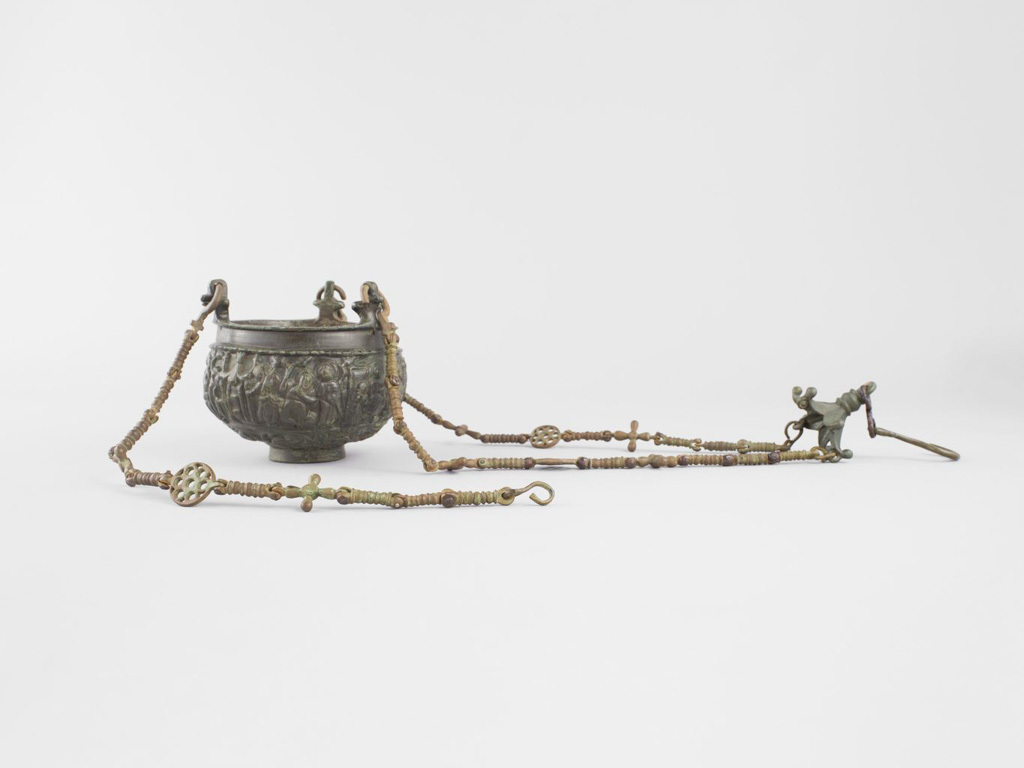The main body of this bowl-shaped incense burner (thymiaterion) is decorated with nine vignettes illustrating the life of Christ. The cycle begins with the Annunciation where the Archangel Gabriel appears before Mary to pronounce that she will conceive the son of God. The second scene depicts the Visitation, showing the moment when Mary and her cousin Elizabeth embrace. The Nativity follows, featuring Christ swaddled in a crib while Mary reclines on the right, Joseph is seated at left, and several animals surround the group. Next comes the Adoration of the Magi, with the three kings identified by their pointed caps, followed by the Baptism and the Crucifixion. Thematically connected to the scene of Christ’s execution is a depiction of his block-like tomb, flanked by two women who find the grave empty when they go to anoint his body. The eighth scene illustrates the Doubting of Thomas, and the final image is of the resurrected Christ appearing to a disciple. A tenth scene, the Raising of Lazarus, appears on the foot of the bowl.
The iconography of the scenes closely adheres to imagery found on objects discovered in Syria and Palestine, while several bowl-shaped censers decorated with images from the life of Christ were excavated in Egypt in the early 20th century. All three of these countries must therefore be considered possible origins for this incense burner.

